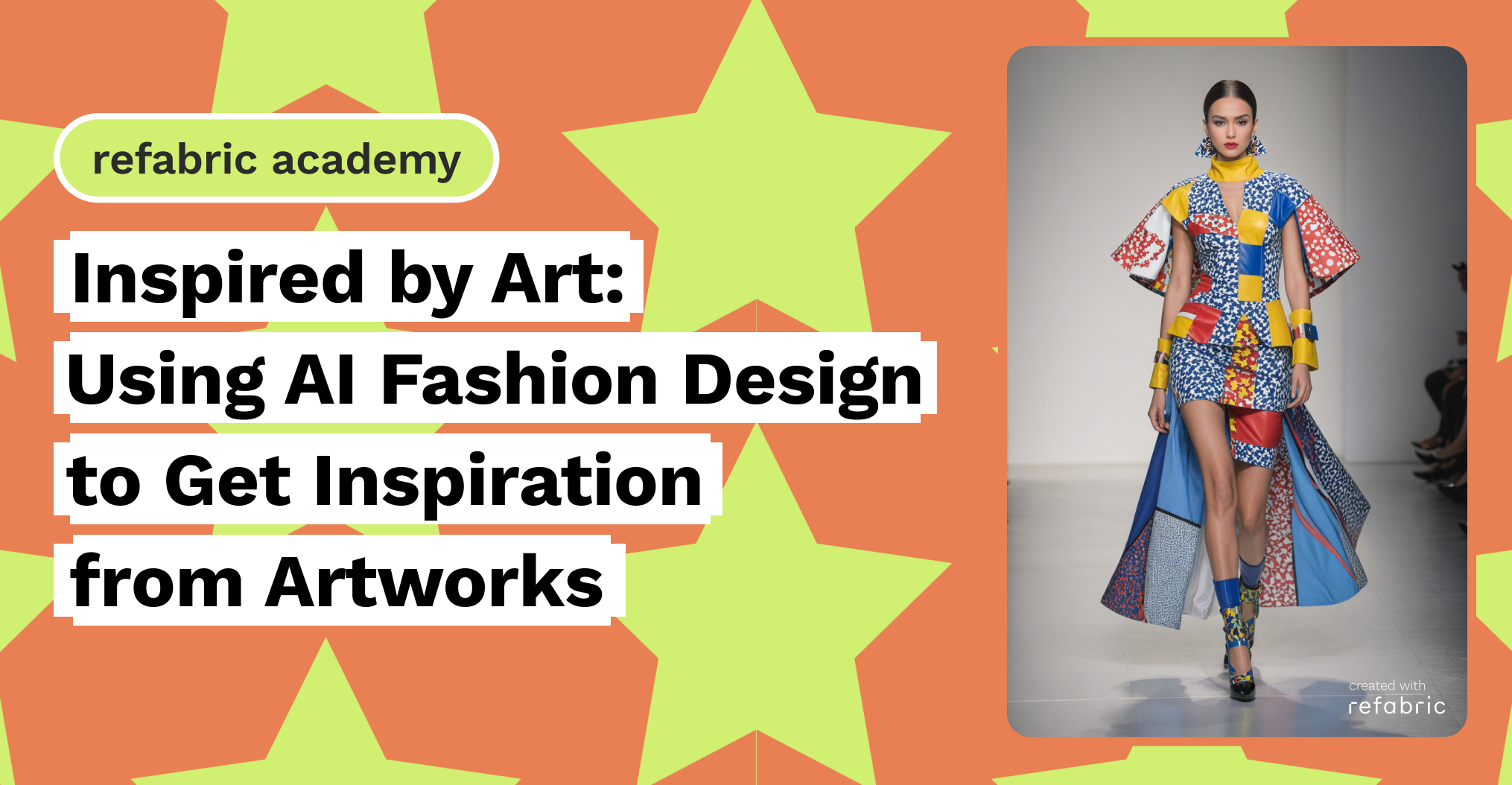AI fashion design draws inspiration from art, continuing a tradition that has always influenced the fashion industry. From well-known fashion brands’ collections inspired by many anticipated art figures to the pop-art culture that came in waves many times in the last century, art has been the greatest muse for the fashion world. Using AI fashion design is a way to put more colour and life into the design realm, helping to enhance relationships between artefacts and design pieces.
Getting inspiration from art, with your unique perspective
Customers enjoy seeing familiar features in the design world. After all, feelings are usually sparked by our memories. Art could be a memory too, or a description of a feeling, in the most intense way. That is why we as humans get drawn to specific art pieces when something is moving about the textures, colours and designs that push us to feel something. Most of the popular art pieces such as Van Gogh’s Sunflowers, Dali’s Clocks and Picasso’s Guernica, connotate intense feelings and make us move and help us mystify and romanticize our way of living. Getting inspired by these art pieces is not only useful but also could be innovative when there is a new artistic touch. AI fashion design could find common attributes of personal and inspirational art and recreate influenced collections from a unique perspective.
Make original collections with one click, inspired by art
AI fashion designers can see art pieces as patterns and find common ground on bigger datasets, which might help designers get inspired by a combination of art pieces. Seeing different pieces from the same perspective, AI fashion design could make original collections with one click, saving time while giving more time to improvise and innovate new fashion design looks. Inspiration from art collections can be mundane when the pun is on the nose, but AI fashion design is capable of designing different pieces with the same inspiration without repeating the same pattern or visuals.
Bringing Art to Life with AI: Beyond Imitation
AI’s ability to analyse and interpret art goes beyond mere imitation. It can delve into the essence of an artwork, understand its emotional and visual components, and translate these into fashion designs. For example, AI can dissect the vibrant hues and swirling patterns of Van Gogh’s “Starry Night” and transform these elements into fabric designs that evoke the same sense of wonder and movement. Similarly, the surreal aspects of Dali’s work can inspire avant-garde silhouettes and unexpected fabric combinations that challenge traditional fashion norms.
Enhancing Creativity Through AI Fashion Design Collaboration
The collaborative nature of AI fashion design also facilitates greater creativity. Designers can input their ideas and receive suggestions from AI, sparking new directions and innovations. This symbiotic relationship enhances the creative process, allowing designers to refine their visions with the aid of sophisticated computational tools. As a result, they can produce more diverse and expansive collections, all while staying within budget.
With extensive datasets enhanced by a wide range of innovative fashionable looks, AI fashion design enables realistic decisions on different designs. It provides comprehensive information about the physical positioning of various textures on styles. This capability ensures that every element is thoughtfully integrated, enhancing the overall aesthetic. Additionally, AI fashion design can predict how different textures will behave in combination, allowing designers to foresee potential issues and make adjustments before any fabric is cut. This not only optimizes the design process but also minimizes waste, contributing to more sustainable fashion practices. Through AI, designers can explore a vast array of creative possibilities, ultimately leading to more innovative and captivating fashion collections.
In conclusion, AI fashion design leverages the rich history and emotional depth of art to inspire new fashion creations. It allows designers to experiment boldly with textures and layers, break free from financial constraints, and produce unique collections that captivate and inspire. As AI continues to evolve, its role in the fashion industry will only grow, making it an indispensable tool for designers seeking to infuse their work with the timeless beauty of art.
